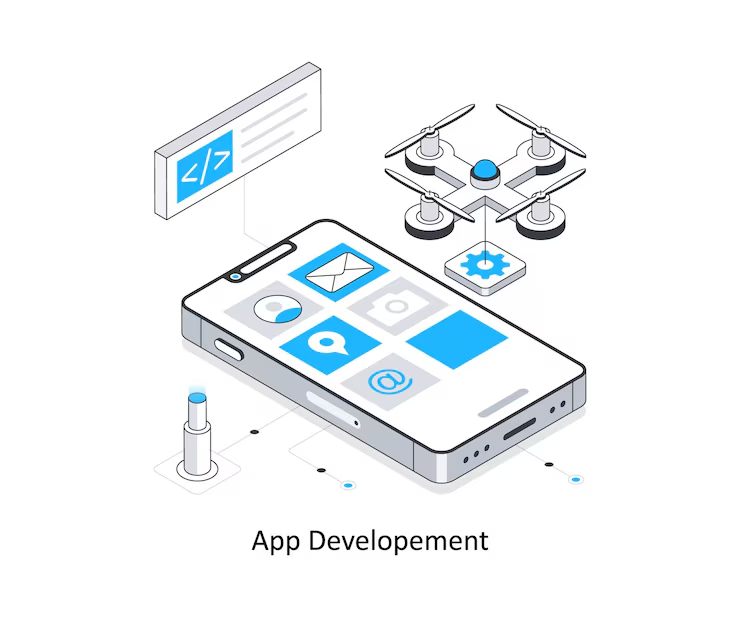In today’s tech-driven world, mobile apps have become essential tools for engaging customers and streamlining operations. Whether you’re launching a startup or scaling an established business, choosing the right app development framework is a critical decision that directly affects your app’s performance, cost, and time-to-market.
What Is an App Development Framework?
An app development framework is a set of tools and libraries that simplify the creation of mobile or web applications. These frameworks provide pre-written code, APIs, UI components, and debugging tools, allowing developers to build apps faster and more efficiently.
There are three primary categories:
- Native Frameworks: Built for a specific platform (iOS or Android).
- Cross-platform Frameworks: Allow development for both platforms using a single codebase.
- Hybrid Frameworks: Combine web technologies with native features.
Why Choosing the Right Framework Matters
The framework you choose can significantly impact:
- User experience
- Development speed
- Maintenance costs
- App scalability
- Integration capabilities
Selecting the wrong one can lead to poor app performance, security issues, or high development costs.
Key Factors to Consider
1. Business Goals
Are you building an MVP or a feature-rich app? Short-term and long-term goals can influence your framework choice. For instance:
- MVP/Prototyping: Use a fast-to-deploy cross-platform framework.
- Enterprise-scale apps: Consider performance-heavy native solutions.
2. Target Platform
Are you developing for iOS, Android, or both? If both, cross-platform frameworks like Flutter or React Native offer better efficiency.
3. Performance Needs
For apps requiring high performance (e.g., games or AR), native frameworks like Swift (iOS) or Kotlin (Android) are ideal.
4. Development Budget
Limited budget? Cross-platform frameworks can save you 30–40% in costs by reusing the same codebase.
5. Time-to-Market
Need to launch quickly? Choose frameworks with rich libraries and third-party integrations to accelerate development.
6. Team Expertise
Your in-house team’s skills matter. If your team knows JavaScript well, React Native or Ionic could be a natural choice.
7. Community & Support
A larger developer community means better documentation, more plugins, and faster bug resolutions.
Popular App Development Frameworks in 2025
✅ React Native
- Type: Cross-platform
- Language: JavaScript
- Pros: Fast development, large community, reusable components
- Cons: Performance not as high as native
Best for: Startups, MVPs, and apps with simple UIs
✅ Flutter
- Type: Cross-platform
- Language: Dart
- Pros: High performance, great UI, hot reload
- Cons: Less mature compared to React Native
Best for: High-performance apps with rich design needs
✅ Swift (for iOS)
- Type: Native
- Language: Swift
- Pros: Optimized for Apple, secure and fast
- Cons: Limited to iOS
Best for: iOS-exclusive or high-performance iOS apps
✅ Kotlin (for Android)
- Type: Native
- Language: Kotlin
- Pros: Official Android language, concise code
- Cons: Android only
Best for: Android-first strategies or complex Android apps
✅ Ionic
- Type: Hybrid
- Language: HTML, CSS, JavaScript
- Pros: Easy to use, good for web developers
- Cons: Lower performance
Best for: Simple apps or progressive web apps (PWAs)
Choosing Based on App Type
| App Type | Recommended Framework |
| MVP | React Native, Flutter |
| E-Commerce | Flutter, React Native |
| Game/AR/VR | Unity, Native SDKs |
| Enterprise | Native (Swift + Kotlin), Xamarin |
| IoT/Hardware-Connected | Native SDKs |
Security Considerations
Choose frameworks that support:
- End-to-end encryption
- Secure storage (e.g., Keychain, Keystore)
- Biometric authentication
React Native and Flutter both support standard mobile security features via third-party plugins.
Scalability and Future Proofing
Look for frameworks that allow easy updates, support third-party integrations, and can scale as your app user base grows. Flutter and React Native both offer good scalability, but native apps may be better for complex features in the long run.
Cost Breakdown by Framework (Approx.)
| Framework | Avg. Cost for Basic App | Avg. Cost for Complex App |
| React Native | $10K–$30K | $50K–$100K |
| Flutter | $10K–$35K | $60K–$120K |
| Native (Swift/Kotlin) | $20K–$50K | $80K–$150K |
| Ionic | $8K–$25K | $40K–$90K |
Final Thoughts
Choosing the right app development framework isn’t a one-size-fits-all decision. It depends on your business goals, budget, timeline, and the type of app you’re building. Take time to evaluate all the options, consult your development team, and even consider a tech partner to guide you through the process.
With the right framework in place, you’ll be on your way to launching a successful, scalable, and high-performing mobile app in 2025. From SEO and content marketing to PPC advertising and analytics, digital marketing empowers brands to build awareness, engage customers, and achieve sustainable growth in the ever-evolving digital landscape.







